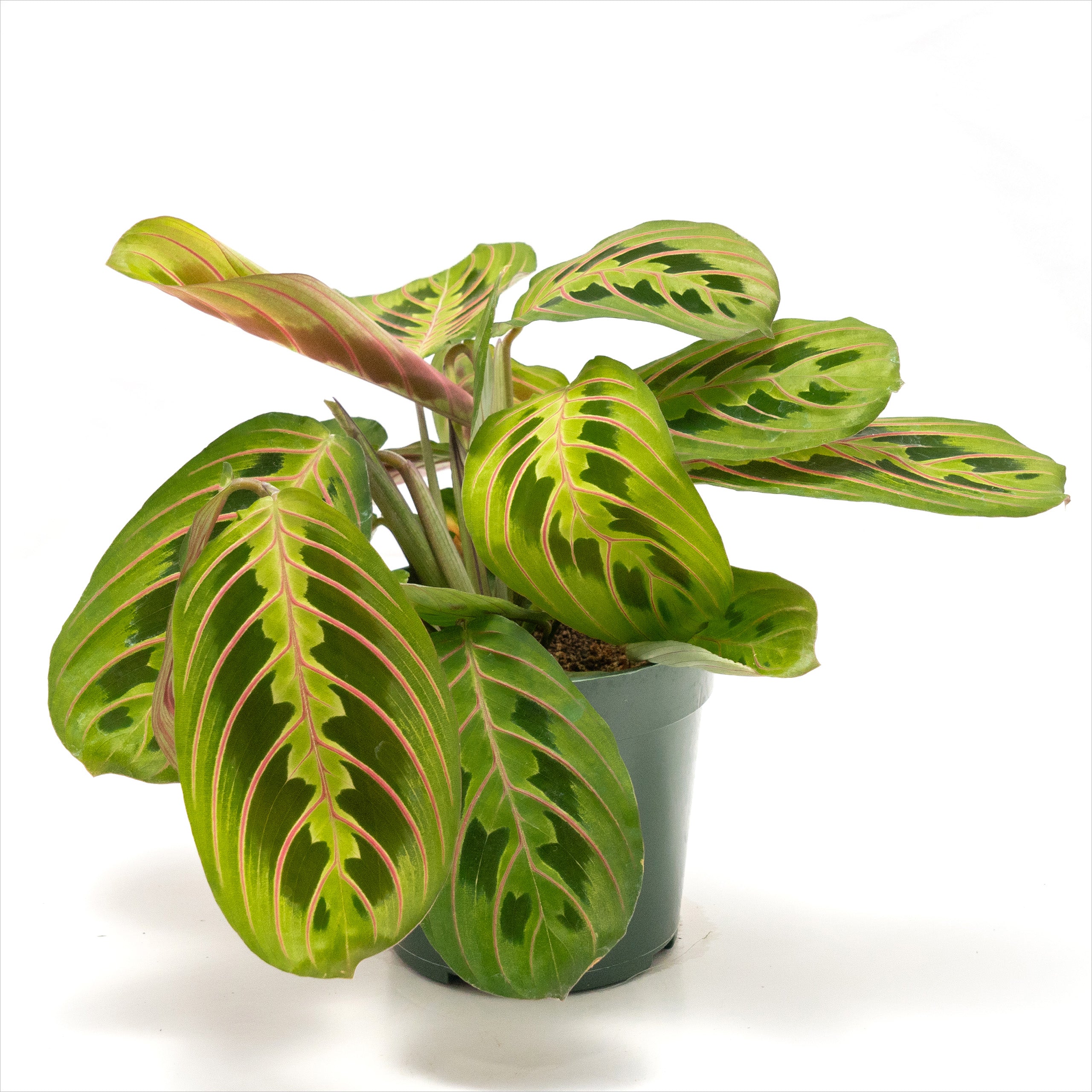
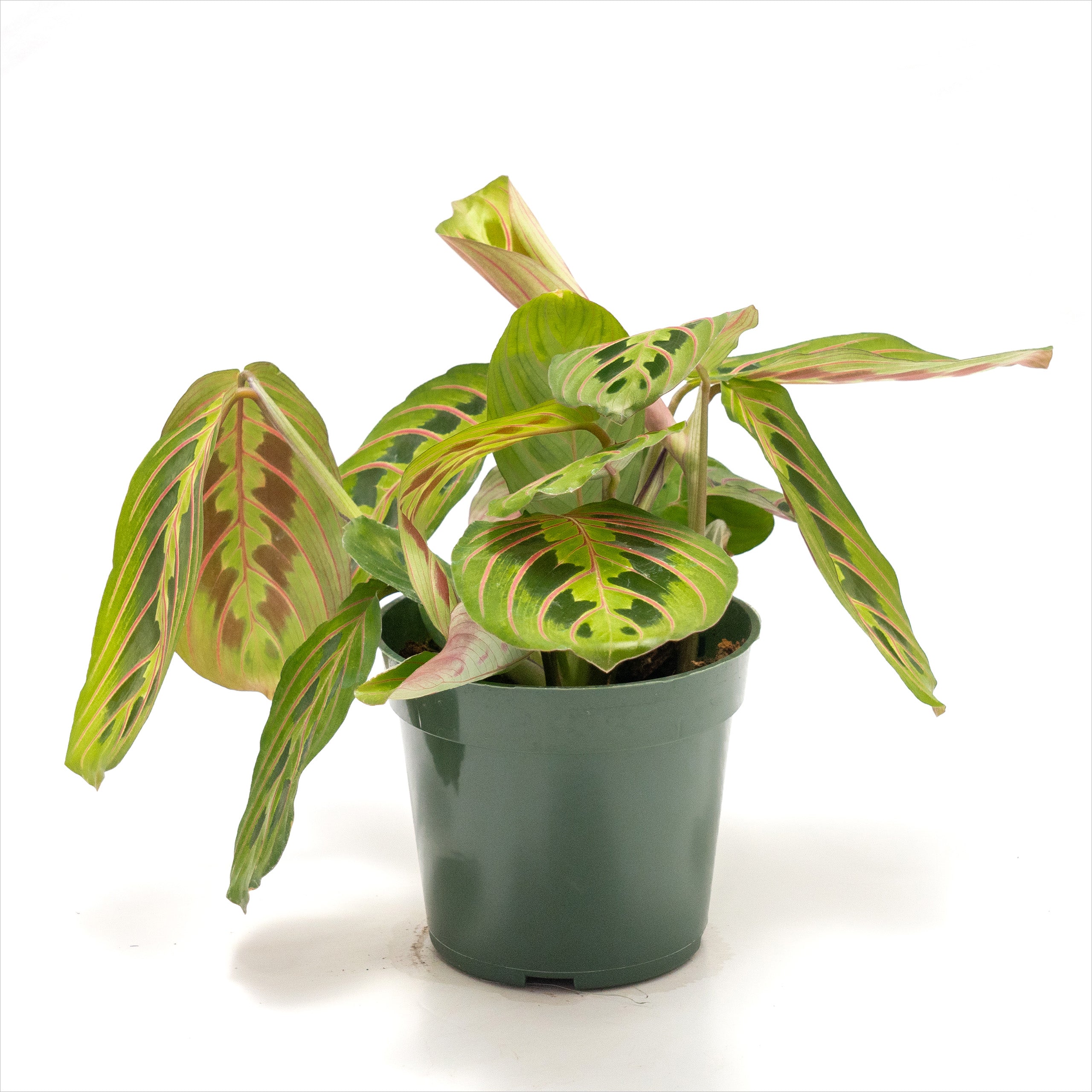
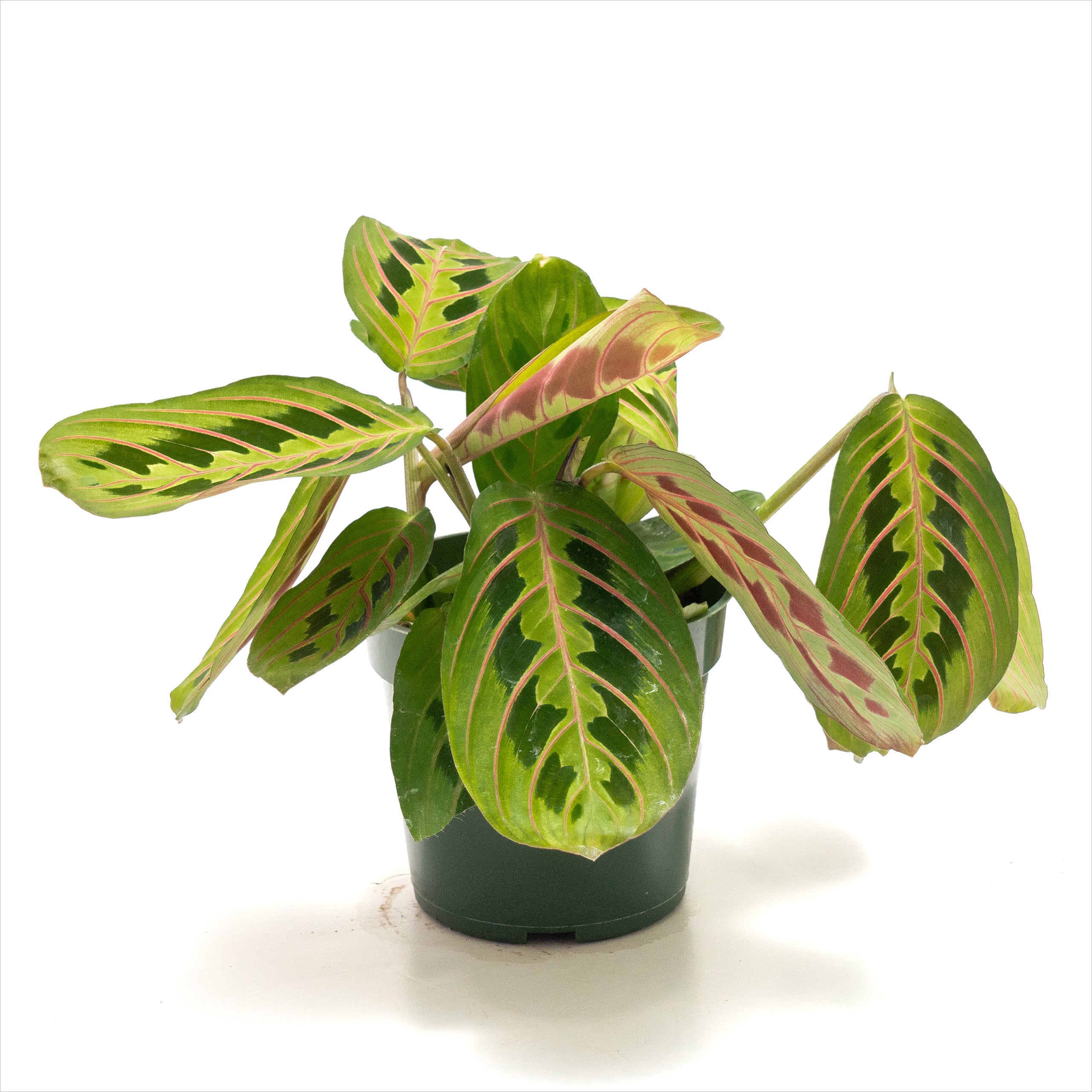
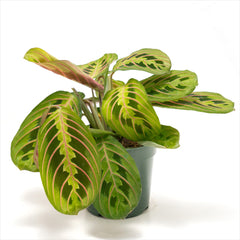
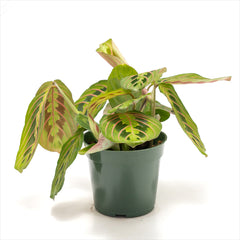
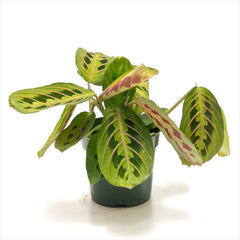
Maranta ‘Prayer Plant Red’
Description:
Maranta ‘Prayer Plant Red’ is a stunning variety of the Maranta genus, also known as the “Prayer Plant” due to its unique leaf movement. The plant features beautiful, green leaves with striking red veins and a deep maroon underside, giving it a bold, eye-catching look. As with other prayer plants, its leaves fold up at night, resembling praying hands. It thrives in low to medium light and high humidity, making it an excellent choice for indoor environments like bathrooms or kitchens. This ornamental plant also offers air-purifying qualities, improving the overall air quality in your home.
Watering:
Water when the top inch of soil feels dry to the touch. Keep the soil evenly moist but not soggy, as Maranta ‘Prayer Plant Red’ doesn’t like sitting in water. Make sure the pot has good drainage to prevent water from accumulating at the bottom. Reduce watering in Winter when growth slows down. Always avoid letting the plant sit in water to prevent root rot.
Fertilizer:
Feed with a balanced liquid fertilizer every 4-6 weeks during the growing season (Spring and Summer). In the Fall and Winter, reduce fertilizing as the plant’s growth naturally slows. Over-fertilizing can cause leaf burn and stress the plant, so it’s better to fertilize sparingly.
Lighting:
Prefers bright, indirect light but can tolerate moderate to low light conditions. Direct sunlight can scorch its vibrant leaves, so keep it in a spot with filtered light. A North- or East-facing window is ideal for this plant. Too little light may cause the vibrant red veins to fade and the plant to grow leggy.
Temperature:
Thrives in temperatures between 65-80°F (18-27°C). Avoid placing it in areas with sudden temperature fluctuations, cold drafts, or near air conditioning vents, as these can stress the plant. Temperatures below 50°F (10°C) should be avoided, as they can harm the plant.
Humidity:
Prefers high humidity. If the air is too dry, mist the leaves regularly, use a humidity tray, or place the plant near a humidifier to maintain the necessary moisture levels. Low humidity can cause the edges of the leaves to brown and slow down growth.

